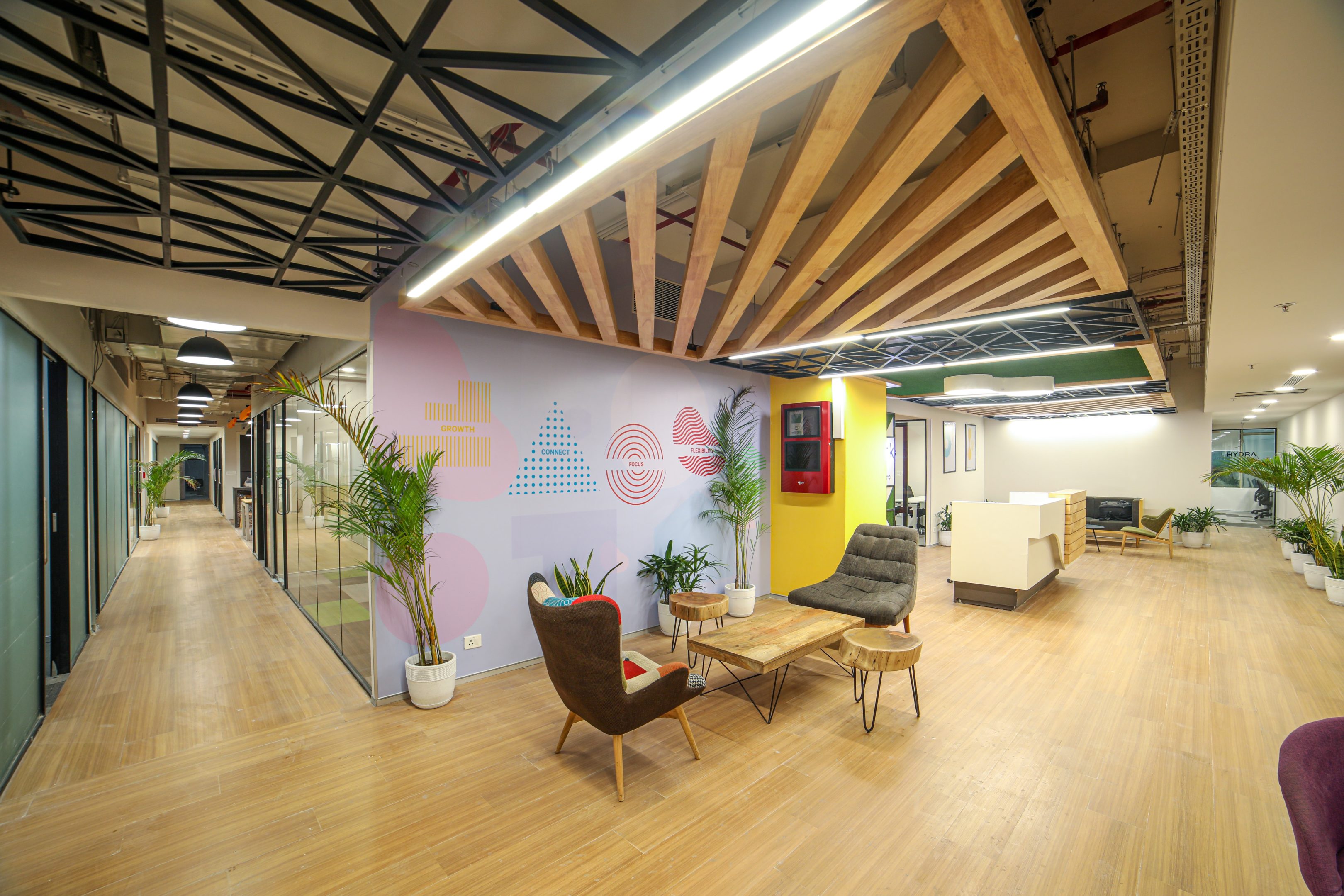
Business Model Canvas: Key Resources
Here we will review building block number SIX of the Business Model Canvas: key resources. A Business Model Canvas is a template used to document all key components of a new or existing business on one page. This business model assists new organizations in bringing into focus their business ideas and all needs for operations. It also helps existing businesses to strengthen the methods and resources used so that they can be more successful.
Created by Alexander Osterwalder, the Business Model Canvas has nine categories. They help to clarify all the working parts of a successful business and have helped many entrepreneurs organize their companies. These categories are as follows:
Customer Segments
Value Propositions
Channels
Customer Relationships
Revenue Streams
Key Resources
Key Activities
Key Partnerships
Cost Structure
The key resources category includes assets essential to the business, tangible, intangible, rented and owned. These key resources will allow companies to offer value-based propositions, foster outstanding customer relationships, and accumulate revenue through various marketing and distribution channels. These key resources are the main components the business needs to deliver a product that is unique and different from its competitors. When considering adding a key resource to the list, ask yourself whether it supports your value proposition. This will tell you whether or not to include it in your business model.
Types Of Key Resources
The resources divide into four major categories: physical, intellectual, human, and financial. These resources may have other consumer goods companies, suppliers, and individuals involved, each having its role in your company’s success. In short, key resources determine how your company makes money. The ability to find and use key resources is the failure or success of your company. So, assessing your tangible and intangible resources in detail is critical. Good business models separate businesses.
Physical Key Resources
Physical resources are tangible resources. You can feel and see these objects. Examples of physical resources are buildings, machines, various modes of transportation, distribution networks, manufacturing facilities, and others. Each physical resource of your business is a critical key resource.
The physical things that make your company work are crucial. There has to be a place to manufacture your products. There must be a place to store your inventories so that you can maintain a steady and reliable supply. There also has to be a means for products to reach the customer safely and on time.
Between all these points, there must be reliable modes of transportation to get your merchandise from one location to the other. If you don’t have reliable transportation in your business, it has failed before it has begun.
Manufacturing and distribution facilities ensure that your merchandise is manufactured and kept safely until the time to deliver the product to its final destination. Securing these facilities either means that you purchase land and build these facilities, purchase already built structures, or rent structures to serve your company’s purpose. This takes careful planning and is necessary to operate your company professionally and efficiently.
Human Key Resources
People are the most pivotal keys in any organization. Each one is a key partner, and the people’s innovation, mindsets, and dedication to your ideas in the company push it forward into greatness or sinks it into failure. You can not skim and shortcut this area of your business. In every particular aspect of your company, you need human resources. Here are some of your company’s human key resources listed:
Customer service agents
Information Technologists
Employees who manufacture your product
Salesmen
Delivery truck drivers
Managers to oversee production
Human Resources employees
Your employees are increasingly important components of your organization’s success. People are vital to your business in many ways to convert your assets into value for your customers. One of the most important things you can do in this key resources building block is to ensure every person in your organization receives proper training for their jobs.
You do not want a deficiency in training to destroy your project. Always be willing to invest in your people. What may seem like only minor investments will show in the form of a thriving enterprise.
Intellectual Key Resources
These are intangible key resources and they can make or break established infrastructure. Intangible assets cover related intellectual property such as copyright, trademarks, customer databases, important customer knowledge, brands, and customer know-how. Developing Intellectual resources takes time and money.
Intellectual Property can overlap with human resources and tie into having properly-trained staff. Each person in creative industries has specialties, experience, and education. It is a must to tap into these knowledge banks to add value propositions to your company and brand.
There are many ways to benefit from the intellectual skills of your workers. One of these ways is to set up a Corporate University. It is an intranet system with valuable educational material. It is an effective source to educate your employees without sending them to a campus and paying transportation and tuition fees.
Financial Key Resources
Every company needs financial resources. Cash, lines of credit, and stocks are all financial resources you can use in your business. The requirement for monetary funds is different from business to business.
The financial needs of law firms look very different to those of more creative industries. A scope driven business, like an IT provider whose target customer segment is all law firms in a certain area, will also have different needs to an infrastructure driven business, like businesses in the telecommunications industry. Banks, for example, need more cash assets than many other industries.
An insurance company is also an industry that needs to have cash assets on hand at all times. An example of a business failing because of a lack of financial resources would be the China Life Insurance Company. This insurance company could not sustain its presence in the insurance market because it does not have the financial key resources.
Business Model Canvas Key Resources & Options
The Business Model Canvas lends itself to exploring options and discovering possibilities. The beauty of this business model is the ability to see your business with one overview on one page. You can see where holes or weaknesses in your strategy may be in different areas of the company.
This allows you to play around with the key resources to see if one thing may be better than the other. You see ideas and their potential results, like renting versus buying. As entrepreneurs, you can always make these kinds of choices. Many of these choices depend on your ability to take risks, anticipate profits, and the funds available to your company. Playing with the key resources impacts your budget structure, your ability to have cash available for your capital projects, whether it is cash on hand or taking out a loan.
An example of key resources impacting your budget structure would be deciding on a custom-built website designed in-house or sourcing it out to another company to build. The financial overhead, human resources, and intellectual resources would be different for each decision.
Internal Brainstorming
Finalizing your key resources and deciding whether to include them in your business model takes some investigation and planning. You have to look at each division of your organization and go further than surface level. Building effective business models takes digging deeply to see what are your best available resources. In identifying key resources, brainstorm with your teams to see what key resources they feel are required.
Human Resources Department
For example, talk to your human resource department. The managers in that department may recognize opportunities that workers in other areas of the company may not. Talented human resources managers can identify valuable resources in many areas of the company. They deal with hiring key employees, as well as backend information, like the relationship between employees, managers, and owners. Human Resources also deal with customer related information such as our customer service agents’ ability to foster good customer relationships. They can also help to identify which particular customer segment needs help, and in which way.
You may want to ask yourself, are there any holes there? Do your managers and teams work well together? Are there any unresolved or lingering problems between them? Has there been any customer complaints about our service? What were they? Should there be more training, and if so, it needs to be part of your business model. Lack of training can single-handedly kill your value proposition.
Warehouse Department
Your warehouse workers might have valuable insight into the sales and distribution networks portion of your company. Questions you can ask here are, is there enough inventory in the warehouse, or are we struggling to meet supply and demand? Are delivery trucks picking up merchandise and delivering on time? Are there any complaints about the merchandise once it is delivered? Is our location in a competitive environment?
IT Department
Your IT expert knows the technical needs of your organization. In today’s world of technology, you cannot shortcut the IT department. They are key employees, and your entire business depends on their know-how. Your IT department handles your internet networking system, your intranet system, distribution channels, ordering, digital storage, and the list goes on. Questions you may ask here are, are our present antivirus and security systems up-to-date? Have any breaches occurred, and if so, what kind were they? What can be done to prevent this in the future? Are there any deficiencies with our software? Is all software current?
Accounting Department
Accountants know everything about the finances of your company. They know the cash on hand, the revenue, the expenses, and all monetary resources available. They can find vendor finance and advise you on how to fund each area of the business.
Business Model Canvas Key Resources Finalization
Think of all the information you gain in your brainstorming and investigation sessions. All of the resources your staff mentions to you should be assessed for their value proposition. Take your Business Model Canvas and incorporate the key resources of your company into the canvas, then step back and reorganize according to the changes.
After doing this, and deciding you have a decent, working, and effective Business Model Canvas, it is time for a meeting. Arrange a meeting with all the product developers, necessary executives, and key partners and run the business model by them. Open the floor for feedback. Earnestly listen to what your board has to say, and make adjustments and amendments according to their feedback. This will help you identify any key resource missing, and ensure that you have the best business model possible. Great business models separate themselves from their competition with ease.
Rinse and Repeat
Make sure you periodically revisit your value proposition, your key resources and your business model periodically. Your key resources can change. Be sure you are aware of these changes and know how to compensate and reorganize your current business model so that your business is successful. Good business models stay fresh.
Author Bio
GROKKETSHIP Staff

Share:
Follow Us:
Most Popular


10+ PERSONAL CRM OPTIONS REVIEWED

10 OUTSOURCED BDR SALES AGENCIES COMPARED

FRACTIONAL MARKETING: EFFICIENT BUSINESS GROWTH
Subscribe To Our Newsletter
No spam. Curated directories & articles about business, startups and templates.
MENU
Related Posts

How to Build a High-Performing Marketing Stack for CMO Success
Dive into our blog post to learn how chief marketing officers can transform from brand champions to revenue drivers and customer whisperers through a strategic

10+ PERSONAL CRM OPTIONS REVIEWED
Yes, there are “solutions,” but nothing is perfect. Here is the path of what I evaluated, what I liked, what I didn’t and why.

10 OUTSOURCED BDR SALES AGENCIES COMPARED
I interviewed several of the top performers according to Clutch, but this was not my exclusive source. Here’s why: some smaller companies, without as

FRACTIONAL MARKETING: EFFICIENT BUSINESS GROWTH
Fractional marketing involves hiring fractional marketers, or part-time marketing professionals. This way businesses can leverage specialized expertise while reducing the costs associated with a full-time
